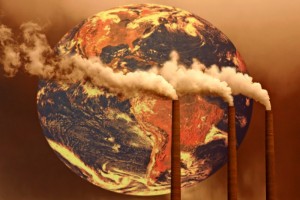Sustainable Living & Sustainable Lifestyle
The debate continues as the planet heats up to record levels
The debate continues as the planet heats up to record levels
The numbers are in on 2014, and it is the hottest year in history, according to findings from the United Nations World Meteorological Organization (WMO). It’s part of a trend that points to a warmer future for the entire planet.
 “The overall warming trend is more important than the ranking of an individual year,” WMO Secretary-General Michel Jarraud said in a WMO news release. He noted that 14 of the 15 hottest years on record have been in the 21st Century and that most scientists expect the trend to continue given the increasing amount of manmade greenhouse gases and the rising temperature of the oceans.
“The overall warming trend is more important than the ranking of an individual year,” WMO Secretary-General Michel Jarraud said in a WMO news release. He noted that 14 of the 15 hottest years on record have been in the 21st Century and that most scientists expect the trend to continue given the increasing amount of manmade greenhouse gases and the rising temperature of the oceans.
The WMO pointed to a number of weather occurrences in 2014 they say indicates climate change. Among them is the fact that high sea temperatures around the globe have led to heavy rains in some areas and drought in others.
For example, the rainfall in western Japan in August 2014 was 301% higher than the average, the highest amount since numbers started being kept in 1946. Meanwhile, droughts have gripped much of the Midwestern United States and rainfall is less than half the average in parts of China.
Such dramatic differences in climate are consistent with global warming, according to the WMO.
Other evidence is anecdotal but continues to mount. For example, Kivalina, an Inupiat village in Alaska, is considering relocating after hundreds of years in the same spot. The village, which has hunted whales every year for generations, may have to move because ice has become too thin in the area to support the village’s fishing expeditions.
The ice used to be 8- to 10-feet thick and stretch out into the ocean, a village elder told the Washington Post. That is no longer the case, and setting up hunting camps on the ice has become too dangerous. The problem has become so widespread for native Alaskan villages that the Obama Administration has asked for $50 million to help Native Americans deal with climate change, according to the Post.
Such findings might be difficult to believe in February, when many people are experiencing cold temperatures and enduring winter storms. But the severity of those storms is part of the overall trend, WMO officials – and other scientists – believe.
A recent report from a researcher at the Massachusetts Institute of Technology found that while the annual amount of snowfall might decrease in many areas due to global warming, the severity of major storms such as the one that slammed Boston this winter will continue to worsen.
The researcher, Paul O’Gorman, told the Boston Globe that his findings indicate that those in colder climates can expect to see very cold temperatures and heavy snowfall in the years ahead.
“In colder regions, heavy snowfalls can become more frequent because of increases in the amount of water vapor in the atmosphere or, in some cases, because of changes in the circulation of the atmosphere, such as a shift in position of the storm track,” he said.
As the numbers continue to indicate a warming planet, the United Nations is hoping they will help convince nations to sign a global pack on reducing greenhouse gases. A conference is scheduled for Paris in December 2015 to consider a new UN-endorsed climate change treaty.
—
This post was provide by Imagine Sports, home of Diamond Mind Online, one of the top fantasy baseball games focused on historical baseball simulation.